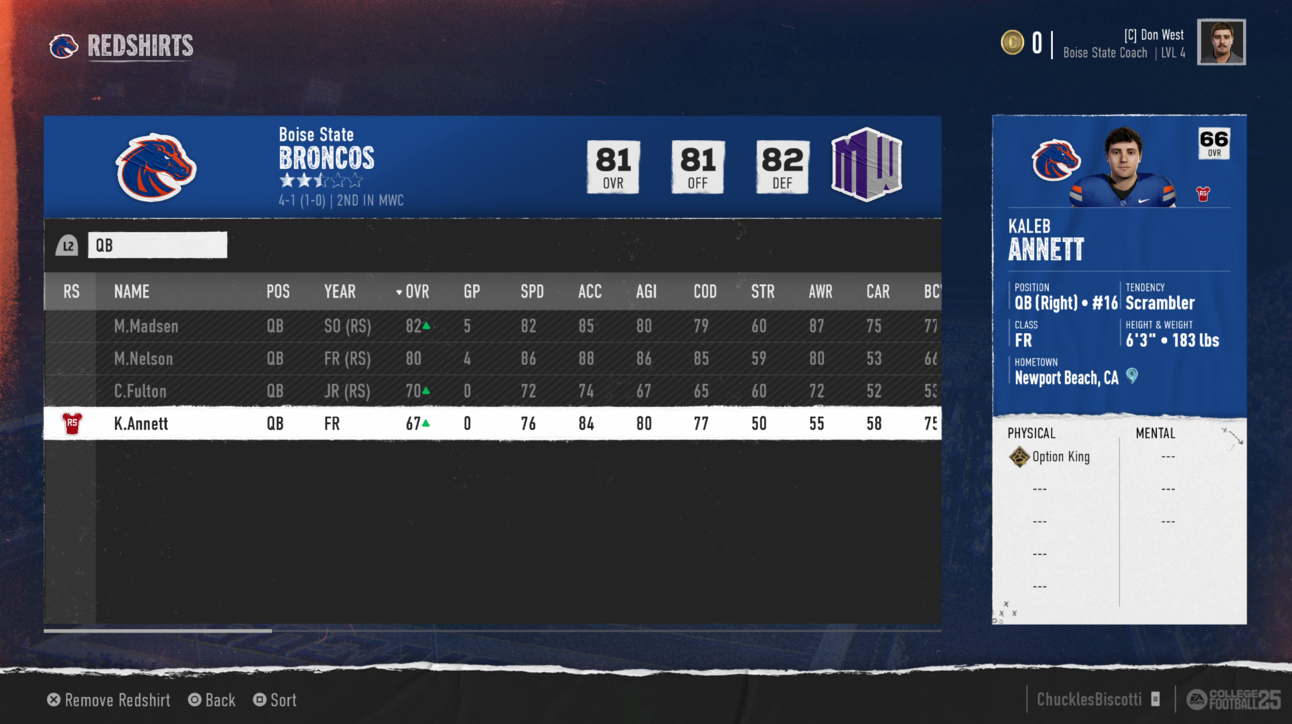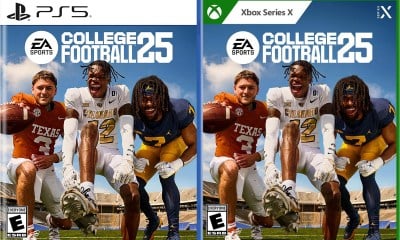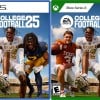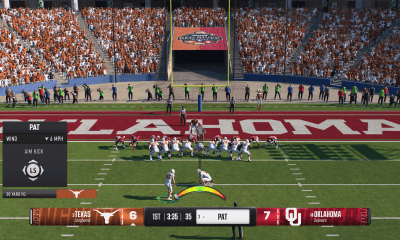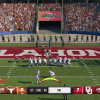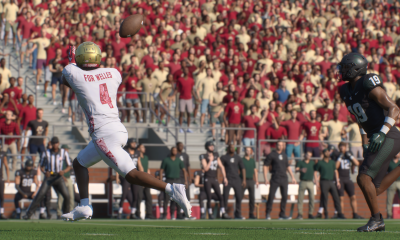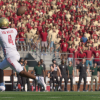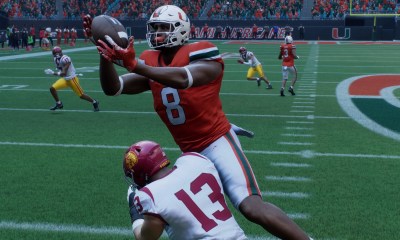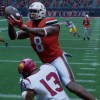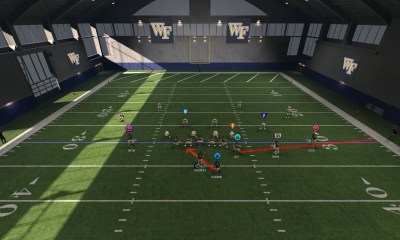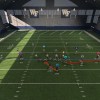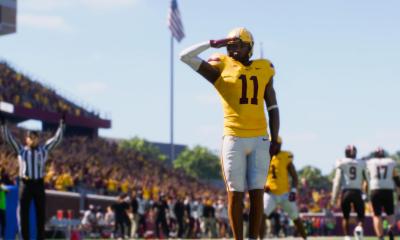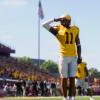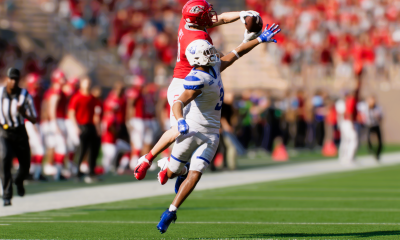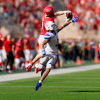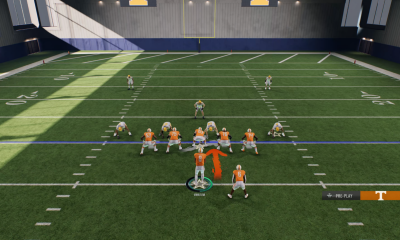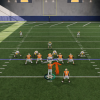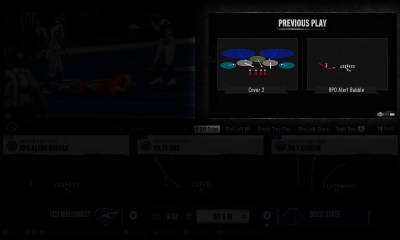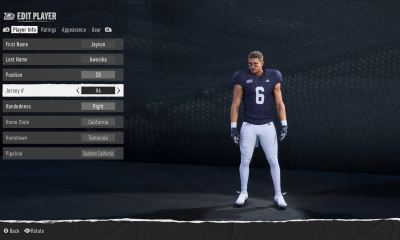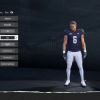EA Sports College Football 25
How to Understand Player Progression in College Football 25
The “fog of war” is a concept lots of video games use. Sports games have used it for scouting/drafting for years, and 4X games like Civilization have used it as the basis for exploration. The “fog of war” is a big reason why I like the first 100 turns of Civilization the most, and it’s why I like College Football 25’s player progression system so much.
But there’s a difference between “fog of war” and simply not telling people how systems work. One is a game design concept, and the other is game design malpractice of sorts. A big reason why I wanted to do that big recruiting guide was to battle some of the misinformation and confusion out there, and it’s the same reason why I now want to explain player progression to y’all.
(This story ran as part of our weekly newsletter, Not Just Another Roster Update, that is sent every Friday to our subscribers. You can sign-up for the newsletter here — it’s the only e-mail you’ll get from us.)
I think it’s a great system, but you can’t really appreciate it unless you know how it works.
Before getting to how player progression works, first let me explain why I like the system in place. Here is what I look for in a player progression system in a sports game:
- Randomness/variance/unpredictability
- Progression/regression based on results
- Progression/regression based on age
- Talent disparity
- Floor/ceiling disparity
- An inability to be in full control of my players
Each of those elements can go wrong if tuned improperly or the game mechanics don’t work properly, but I do want randomness. I do want to be in the “fog” to some extent even after clearing some of that fog by getting a handle on what my players can do and the potential they have. Also, obviously we’re dealing with college players so regression isn’t really a thing as we’re not dealing with age curves in the same way as other sports games, but it’s still in the game to an extent.
The bottom line is if you want to be in full control of player development, you will understandably not like the player progression system in CFB 25. With that said, let’s go through the system.

It Starts With The Gems
I won’t spend much time on this because I talk about gems plenty in the recruiting guide and elsewhere, but red gems, no gems, and green gems are the basis for the development trait ranges. Your development trait makes up one half of the ceiling for your player.
The higher the development trait, the more XP you earn from your accrued stats on the field, and the more you can likely progress in the offseason. As a reminder, the development traits are:
- Normal – The worst trait, XP will be earned at slowest rates
- Impact – Red gems will most often come in here or Normal
- Star – What you hope every green gem gets at minimum
- Elite – The rarest trait and sort of like five-star recruits in that only so many Elites will be in each class
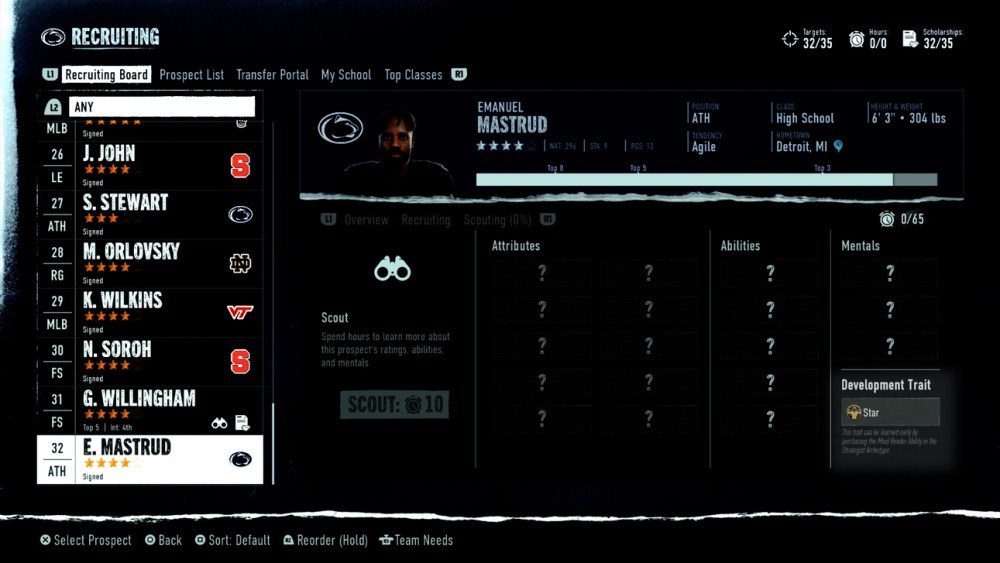
Outside of the coaching ability you can buy that has the chance to tell you the development trait when players visit (that’s a Tier 4 ability in the Strategist tree), you’ll see these development traits once Signing Day hits, and then of course you can always go to the Player Card to see them as well.

Skill Caps
The other half of a player’s ceiling are the skill caps. Skill caps are those little gray boxes you see at the far right of a player’s ratings (assuming he has any skill caps) within the Player Card. Those gray boxes are the ceiling for your player’s attributes in that category.
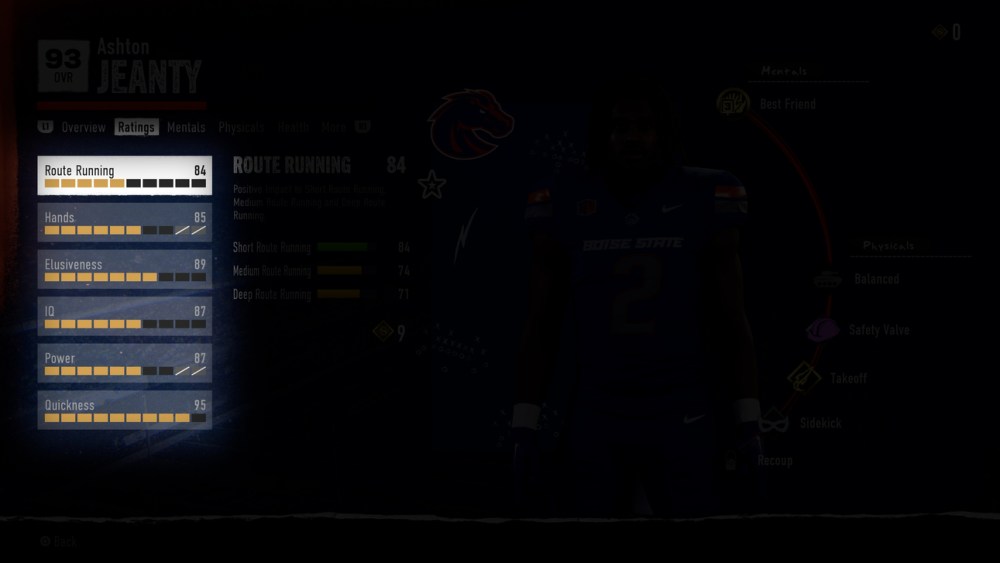
Skill caps are inherent, but coaching abilities can alter them:
- In the CEO tree: An ability that raises the skill caps for all seniors by one.
- In the Architect tree: An ability that has the chance to increase a random skill cap for a specific position when a player levels up.
- Also in the Architect tree: An ability that has a chance to increase best skill cap after winning Conference/National title.
The idea behind skill caps is that no matter how good you might perform and how much XP you earn, your player might just have a ceiling in a specific category. This could also be one of a couple reasons why your player stops getting much of an overall jump between seasons.
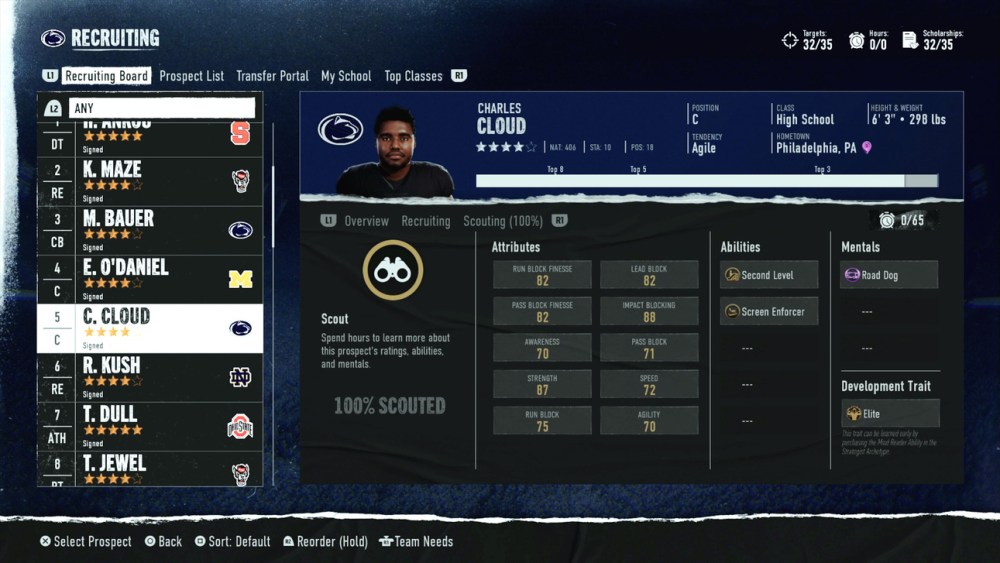
Mental Abilities
We’ll get to physical abilities later on in this guide, but the big thing to know about Mental Abilities is that they do not progress, and you do not obtain them. They are static and unchanging. If your recruit has zero Mentals when you scout them or get them on campus, they will always have zero.
Nature vs. Nurture is clear on this one in CFB 25.
So How Do You Earn XP?
XP is earned “under the hood” during the offseason, based on stats you accrue during the season, and based on certain coaching abilities (that do stack among your coaches). I don’t think winning awards has much to do with how much XP your players earn — if only because it’s not listed anywhere — but it’s possible it could be a thing because there are tons of coaching goals relating to certain events (plus there seems to be “under the hood” XP being earned elsewhere in dynasty mode).
The coaching abilities that impact XP include:
- Motivator tree: Gain extra XP for specific position if another player from that position is drafted in top 3 rounds.
- Motivator tree: Get more XP in general for a specific position.
- Talent Developer tree: Starters at a position gain XP faster.
- Talent Developer tree: Lower-rated players at a position progress faster (this may have to do with offseason training rather than XP since the wording is unclear).
- Architect tree: A specific position earns additional XP for in-game goals.
- Architect tree: A specific position earns extra XP for every 3-game win streak.
Where The Hell Is My XP?
This is where I think EA really dropped the ball with the explainers. I don’t play Road to Glory, so maybe it is detailed there, but you’ll see all these objectives you’re completing and such during games, and you can go and look at what objectives you can reach in various menus, but it’s not really clear where that XP goes or that it’s the basis for any in-season improvements your players get.
And your players do get in-season improvements. Those green arrows you see within the View Roster screen are legit and do show how your player has improved or is at least boosted right now. To actually see this progress, you won’t really know when you “level up” a player, but you can see the XP progress bar within the Player Card.

How many people actually know that’s an XP bar? My guess it’s a shockingly low number. But when that bar fills up via in-game stats, it resets and you get some shiny coins that will be in the top-right corner.

Physical Abilities Vs. Ratings
This brings us to spending that XP and also Physicals vs. ratings. Now, it’s a not a new thing for abilities to be a big deal in sports games or EA games, but it’s worth reiterating that the best abilities are better than the best ratings (at least I think so). I’ve seen players with high-90s coverage ratings still crap the bed far too often, but with specific badges those issues drop quite a bit.
The thing is that everything costs coins. Abilities and ratings cost shiny coins:
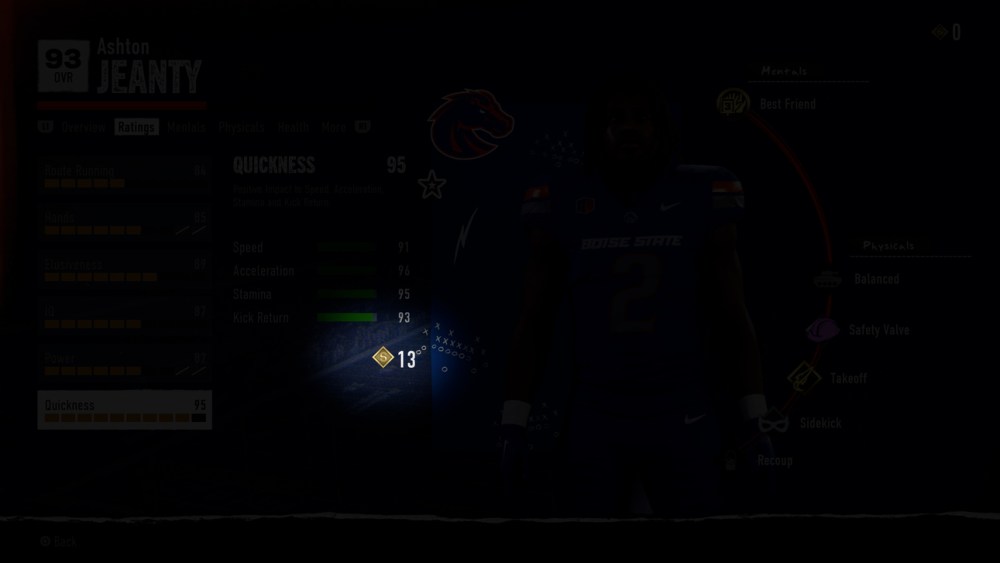
As you cycle through the skill categories, you’ll see a coin cost associated with each one. Some of them will be quite pricey, which is why they don’t upgrade very often. The thing is that while it’s not shown, the abilities also cost points. Just because you become a 90+ overall in some category does not mean you automatically get the next tier of a physical ability.
I didn’t really know this for sure until I saw various folks, including content creator Poodle, explain why this is probably a thing by showing off what the Road to Glory version of these screens look like:
So while we’re 100 percent sure you can never acquire mental abilities, we’re now positive that you can get physical ability upgrades, even though there are no coin costs next to those abilities in dynasty mode (only in Road to Glory).
This solved one of the big questions a lot of people had, which was basically “I had a massive statistical season, so why didn’t my player get any better in the offseason?” If it wasn’t the skill caps or random variance for your offseason “training day” results, then it’s because they were spent on abilities rather than ratings. So your player did get better, you probably just overlooked the abilities.
I think this is one area where I would understand requests for more control. I wouldn’t want players to be able to “directly” influence how points are spent, but maybe as the coach you could say “I want Skill Group X to focus on their speed and explosiveness” rather than just hoping a certain skill group spends it there.
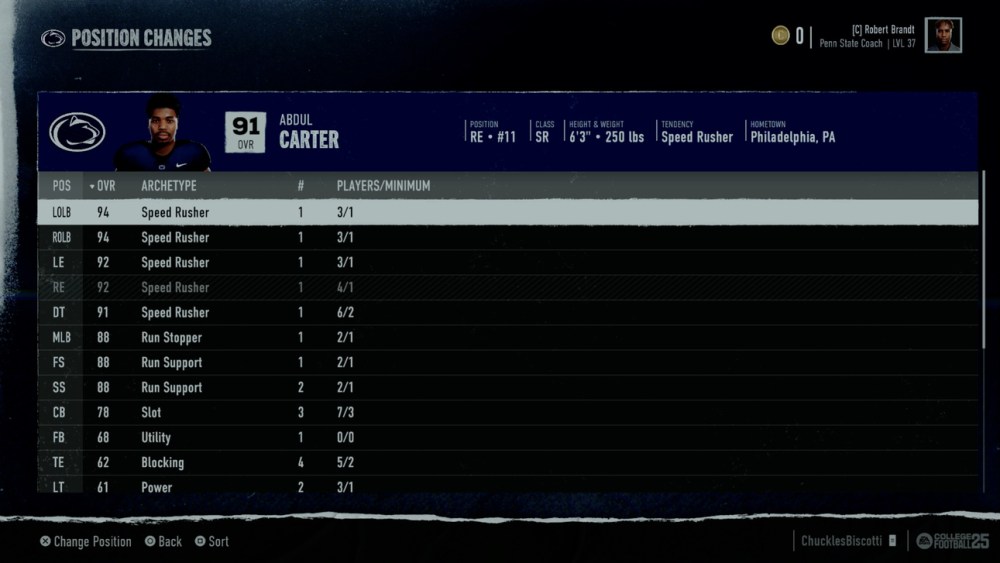
Training Day
Training Day is the biggest day for your team outside of Signing Day. A good result here can really bring new life to all parts of your squad. Here’s what goes into Training Day:
- Randomness/variance/luck
- Coaching abilities
- Development traits
- Age/year of player
- Recent position change
You need to understand that you can simulate this day under the same circumstances and get wildly different results. Sometimes it goes your way and sometimes it sucks to suck. Some will find that frustrating to hear, but I think it’s part of what makes this sort of player progression very novel and fun. Variance is important in these long-lasting modes. A steady upward trajectory with no chance of any results that are outside the expected makes things less interesting.
It’s the same reason why it’s intense if you start losing games in dynasty mode itself. If you start to have a bad season, this impacts your recruiting, and then it cascades and impacts how good your team can even be the next year. That outcome has a more obvious cause and effect, but the point is nothing is a given. With the offseason, you don’t have the same direct cause and effect because you’re not in control of those players when the season ends. It’s up to them, and that means the results are going to be hard to predict.
That said, we know the variables and can control some of them. We’ve talked about development traits, so that’s already explained (the higher the better for how much your player can improve in the offseason assuming the skill caps aren’t low). Randomness/variance/luck are out of your control, so that’s two things we don’t need to talk about.
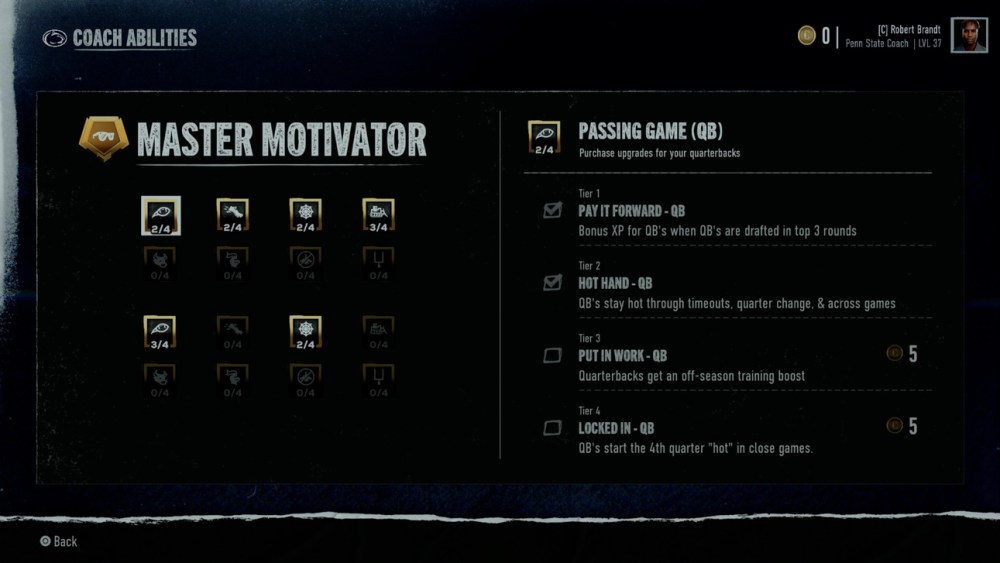
Coaching abilities are the most direct way to impact the Training Day results. The ability that helps you here is:
- Motivator tree: A specific position group will get an offseason training boost
Again, that does stack with your coaches.
The most interesting one that plays a role in your Training Day results is a recent position change. It may not always show up in that first offseason right after changing positions, but extreme position changes have a better chance of leading to bigger offseason results. Now, in part, that’s because you’ll be dropping much further in overall with “extreme” changes.
So let’s say you go from WR to CB and drop from a 78 to 58 overall. If your player is a freshman or sophomore, he may only get like 5-8 points back that first Training Day. But if he sticks at that position the whole season and you keep it until the next offseason, you might see some really big results that get them back to that 78 overall if not beyond it. In effect, it sort of re-rolls your skill caps as well, which is why you can potentially reach a new ceiling with these players.
It’s not always going to go “perfect” for you, but it’s worth following those players for at least two Training Days to see if the results really pop off.
The age/year of your players is the last (and biggest) way Training Day results are impacted, which I’ll cover in the final section here on Redshirts.

Redshirts (Positives Vs. Negatives)
To play or not to play freshmen? I don’t think there’s a catch-all here, but basically it mostly comes down to playing time and development trait. The Elite and Star players should be pushed out on that field ASAP if they have a place to play and can get actual valuable touches/reps.
It seems like a Redshirt freshman will not get as much of a boost a lot of the time as a freshman who plays out the year and gets that Training Day outcome. It can still go great for a RS player who didn’t even see the field for the four games they’re allowed to play before losing RS status, but the results I’ve seen are generally more friendly to those who play.
However, if your top-end freshman is going to be splitting touches or in and out of the lineup, then RS him. You can still see some incredible results, and then all the sudden you might have a high 80s overall player who is still just a freshman.
The Training Day results for the most part really start to have diminishing returns after those freshman and sophomore seasons. They also have diminishing returns much more quickly for Impact and Normal development trait players. This is why I would generally recommend you sit the Normal and Impact players for their RS seasons. If they’re going to hit their skill caps early anyway, make sure you maximize that first RS offseason so you have plug-and-play guys to fit in where needed who don’t need much in-game XP anyway.
As for juniors and seniors, they’re mostly baked by that point. In-season progression actually ends up being the better bet here if you’re not blocked by skill caps as there are more direct ways to boost XP gains via stats and coaching abilities week to week.


